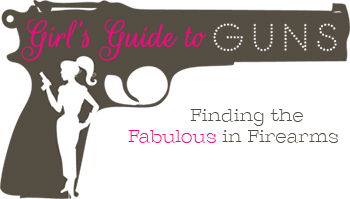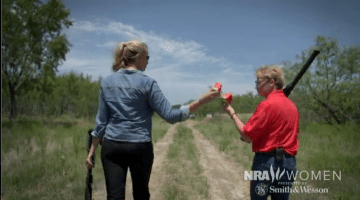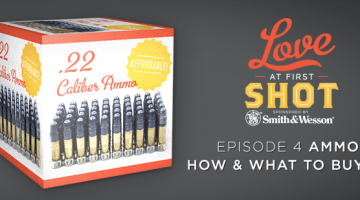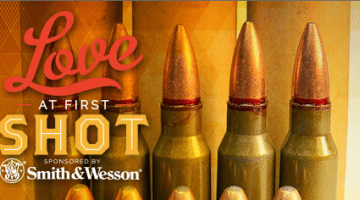Our friends over at Defense Actions have been kind enough to allow us to post the following article in its entirety. We’ve written about our advice for first-time gun-buyers, but it’s always good to get advice from others, as well. Although this post focuses on advice for first-time buyers, we think it applies no matter if it’s your first or fiftieth gun.
And if you’re interested to hear more about “acting in a defensive manner when it comes to the protection of yourself, your family and others,” head on over to their website at www.defenseactions.com to learn more. Also, if you have any unique experiences to share about your own time going gun shopping, let us know in the comments!
-GG
By Damon Thueson
50 Years of Experience… In 5 simple steps!
During my time as an instructor I have often been asked by students, “Which gun should I buy?” or… “What’s a good gun?” While attempting to answer those questions and reflecting on my own experiences, I realized that I had not come across any specific method or easy-step process on how to do so. Pooling from those who know more than I do, and hearing “gun buying experiences” from many others, I then organized a 5 step process that anyone can use to purchase the correct gun for them, the very first time.
We are all different for sure, hand sizes and preferences vary, but until now I had never seen an unbiased method designed for the “new-comers”. This method has had very positive feedback, for not only the inexperienced, but also from those who already have handguns. It is something to consider when evaluating what you currently own or for assistance with your next handgun purchase.
The Essential 5 Steps on, “How to Buy a Gun Correctly.”
One must first understand that the two most important things to consider are: 1. Reliability, and 2. Comfort. Realizing that both of these are the major points and that the 5 steps will answer both points throughout the process; for that is what the steps are centered around.
Step 1: What is the purpose of use for the gun? What are you going to use it for? Home defense, concealed carry, hunting, etc. It is important to answer this question, because the caliber you choose to buy is affected by your purpose. For example, home security purposes generally will use a larger round than concealed carry. One may want a 1911 model or Taurus’s “Judge” due to its unique capabilities. Whereas, carrying concealed, you may only prefer a 9mm or .380 for control and concealment. Hunting is another ball game and I will not address it at this time.
Step 2: What caliber are you going to want? You don’t have to land on just one caliber either, perhaps you should decide on at least two, until you get a better feel of exactly what you want. If you have not figured that part out yet, do not worry. The caliber should be determined somewhat by the purpose for which the handgun will be used. For example, women tend to carry the .380 (short 9), more than the 9mm or even the .40 cal. I recommend that men should not carry anything less than a 9mm, unless it is for a backup or reserve protection, such as a Ruger LCP or Micro Desert Eagle or DiamondBack .380 on the ankle or some other place. Some books say that one should carry the largest caliber they can reasonably handle, however I find that may depend on some other points of use as well. I will cover that issue in the summary.
Step 3: Make a list of at least six manufacturers that have a great reputation for quality and reliability. For example, Ruger, S&W, Glock, Springfield, Kimber, Colt, SigSauer, H&K, Taurus, Walther, etc. (not in any specific order of favor here); all are very capable and have great reviews. This step will eliminate the stress of buying a gun that will be “problematic” during a heightened situation. Cost may determine your ability to buy certain models, but rest assured that any of the products from these companies will work fine as long as they are maintained as any gun should be. This step will answer the “reliability” point mentioned previously.
Step 4: Put your hand on each gun. Grip each, one after the other. This step is KEY to purchasing the right way. You will find that each one has a very specific feel, and only when you have handled each one, will your hand be able to distinguish the differences quickly and reliably. There is no rush to buy a gun, but let the salesperson know that you are only looking and want to feel all of the different kinds of guns; take your time and get to where you know what feels good consistently. Take as much time here as you need to. I had one student email me and recounted his 3 month long process, using these 5 steps… and he landed on the one that was consistently comfortable all the time. Good Choice. You may not need to take 3 months, as another of my students only took 3 hours, but each had what worked for them. That is the point here.
NOTE: DO NOT get “talked into” certain brands. No offense, but I find that “Glock” guys are pretty hard core, and many times I have seen a “newbie” choose a Glock simply because the salesperson “said so” only to find that they didn’t shoot as well, but had more comfort and shot better with a different gun entirely. Glocks are great and have a great reputation, but so do others and perhaps that is not the gun for you after all. (Hopefully no hurt feelings there.) Remember the list you have made, any one of the brands listed above will be reliable in a time of crisis. This step answers the “comfort” point previously mentioned.
Step 5: Now that you have a pretty good feel for what you want, or at least you should by this point, go find a good price (if that is possible). I have found that some stores are pricier than others, and sometimes looking online locally, you can find a great deal as well. If you are buying used, then make sure the gun is clean and well oiled. Take the slide off and look for wear marks. Ask the owner how many rounds have been through the gun. If they say only about 100 rounds, but you see pretty good wear marks on the barrel and inside the gun, that seller is untruthful, so be careful. When I bought my XD9 sub-compact, the gentleman said that his wife carried it and it only had about 200 rounds through it. Once I took it apart and looked for myself, I found his words to be true, plus I know that women do not shoot as much as men, so I figured that was true to begin with. I got a great deal and I love the gun as well. I knew as soon as I put my hand around it. It just felt “right” as they say. So for me, the XD is what I prefer. Now read the manual and break it down and shoot it. That is the best way to get to know your gun and safety first as always.
Here are a couple of summary notes: If you can find a place that rents guns so you can shoot them first before you buy, then that is ideal. It can be pretty costly, but it is a great way to get to know the overall feel of a gun before you actually buy one. The only problem with doing this is that I find gun shops do not maintain their “rental guns” very well, and you may get a jaded opinion of a certain kind of maker simply because it was not cleaned as it should have been. If you can find a friend with a good collection who will let you buy the ammunition and go shoot with you… that is a perfect way to decide before you buy as well. Along with the 5 steps, you cannot go wrong doing this.
Consider, when deciding which caliber to buy, the following. I am not a skinny guy, I am pretty stout and I can handle a larger caliber than the one I actually carry. Remember that the bigger the caliber and the smaller and lighter the gun, your arms have to absorb the recoil of the gun. This means that while carrying a larger caliber, you may shoot slower and your accuracy may be worse as well as your comfort level during a heightened situation. You can never tell what will happen, or how your reaction will be during such. Going to the range and obtaining that “muscle memory” will certainly help out, but you still never know for sure what will take place.
For example; shooting a 2” spread at 15 feet makes you feel great, but in a gun fight, force on force training is more likely to save your life. I like to believe Chris Bird in his book, The Concealed Handgun Manual when he states that “shot placement” is really the most important aspect, and not knock-down power. Now that does not mean I am going to carry a .22 just because it won’t kick at all on a good day and that I could hit a fly in mid air, but maybe scaling down on caliber will give you a more comfortable level of security. Perhaps carrying a 9mm instead of a .40 cal may give you more accuracy, more comfort, less recoil, quicker response etc. That may make all the difference in the world when confronted by some “no good SOB” in the middle of the street or at a restaurant somewhere.
I have had many students use these 5 steps when purchasing a gun for the first time; the feedback has been tremendously positive. I hope you will find the same positive experiences in your pursuits… especially the “new-comers”.
Good luck and remember “P4”: Purchase a gun, Practice center mass, Protect yourself, family, others, PRAY you never have to use it!
Damon Thueson
www.defenseactions.com
To see the original post, click here or copy & paste this link into your browser: https://defenseactions.com/defense-principles/5-steps-that-can-change-your-life









